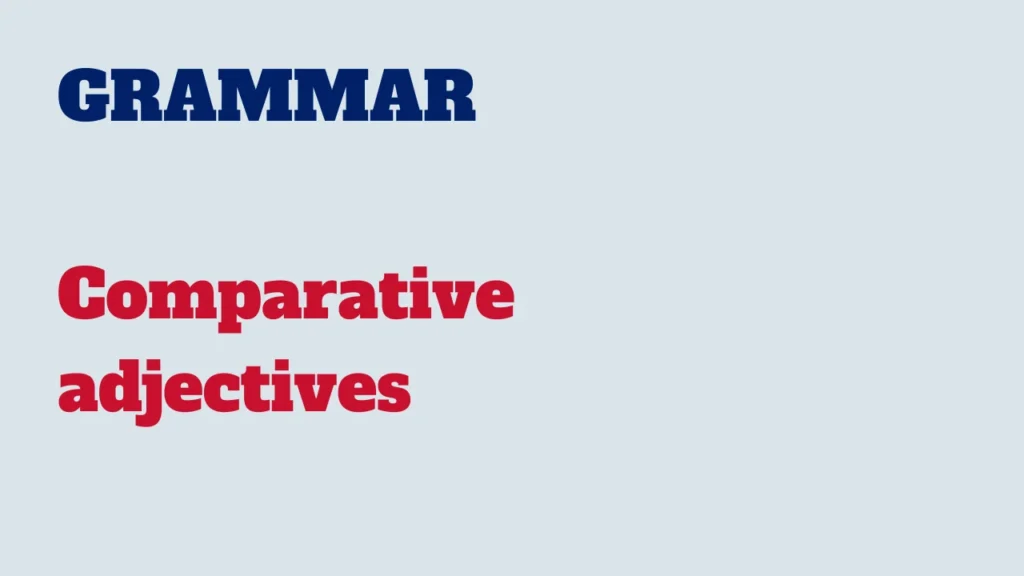Comparative adjectives are used to compare the differences between two things or people. They are often used in sentences where you are comparing one thing to another.

Let’s explore how comparative adjectives are formed and used:
Formation of comparative adjectives:
One-syllable adjectives:
Add “-er” to the adjective.
Examples:
fast → faster
tall → taller
Two-syllable adjectives ending in -y:
Change the –y to -i and add “-er.”
Examples:
happy → happier
busy → busier
Two-syllable or more adjectives (Not ending in -y):
Use “more” before the adjective.
Examples:
modern → more modern
beautiful → more beautiful
Irregular comparative adjectives:
Some adjectives have irregular comparative forms.
Examples:
good → better
bad → worse
far → farther
Usage of comparative adjectives:
Comparing two things:
Used to compare the differences between two nouns.
Example:
This book is more interesting than that one.
Expressing superiority:
Used to indicate that one thing has a higher degree of a particular quality than another.
Example:
My car is faster than yours.
Comparing actions:
Used to compare how two actions are performed.
Example:
She runs faster than him.
With “Than”:
“Than” is often used to introduce the second element being compared.
Example:
This movie is more captivating than the previous one.
Common mistakes to avoid:
Incorrect: He is more taller than his brother.
Correct: He is taller than his brother.
Incorrect: She runs more faster than her friend.
Correct: She runs faster than her friend.
Understanding how to form and use comparative adjectives allows for accurate and clear comparisons in English. Practice using comparative adjectives in different contexts to enhance your language skills. Happy learning!



